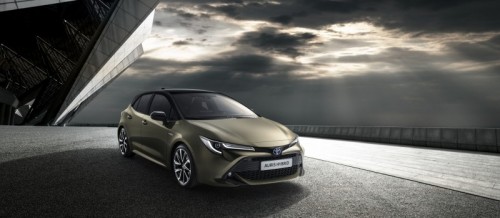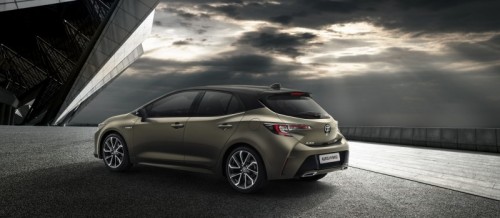Search the Community
Showing results for tags 'hybrid'.
-
The Nissan Kicks, a compact crossover is designed for city living consumers, is now ready to tackle Singapore's urban streets. Currently undergoing homologation, the car is scheduled to be launched here in Singapore by the middle of 2020. At the front, the Kicks sports Nissan's signature V-Motion grille, and closer to back a wide C-pillar finished in black blends itself into the tailgate glass, adding to the 'floating roof' effect for a distinctively crossover look and eye-catching appeal. Bold wheel arch fenders and a rising character line on the bodysides that accentuate the car's crossover stance. Singapore bound models of the Kicks will sport's Nissan's e-POWER drivetrain, which utilises a 1.2-litre three-cylinder engine as a generator to power a battery and a 127bhp electric motor the drives the front wheels. Peak torque from the electric motor is 260Nm. Nissan claims the Kicks e-POWER will be able to achieve a fuel economy of 21.7km/L thanks to this unique drivetrain configuration. Singapore-bound cars will also come with a suite of advanced driver assistance systems that include Intelligent Emergency Braking, Intelligent Driver Alertness, Blind Spot Warning, Intelligent Trace Control, and Rear Cross Traffic Alert. Text https://www.sgcarmart.com/news/article.php?AID=23143 Photos https://paultan.org/2020/05/15/2020-nissan-kicks-facelift-e-power-now-launched-in-thailand-updated-design-four-variants-from-rm121k/2020-nissan-kicks-facelift-e-power-thailand-web-17/
-
- 124 replies
-
- 10
-

-
Hi all, For hybrid cars, may i check does it has to be constantly drive and charge up? if the car is seldom drive for example OPC does the hybrid battery last? Anyone can advise on this?
-
https://www.roadandtrack.com/news/a38053213/countach-designer-denounces-the-new-model/ "Countach Designer Marcello Gandini Denounces the New Model "To repeat a model of the past represents in my opinion the negation of the founding principles of my DNA." In his time at Bertone, Marcello Gandini was credited as the designer behind masterpieces like the Alfa Romeo Montreal, the Lancia Stratos, and the E12-generation BMW 5-Series. His most famous works, though, were Lamborghinis. His most famous? The Countach. Gandini, however, wants to stress that he was in no way involved with the design and production of the upcoming tribute model, the Lamborghini Countach LPI 800-4. The confusion stems from a video interview Gandini did this June. He was presented with a scale model of the upcoming car that he was told represented a tribute to be shown at Pebble Beach. He was not, however, told that this car would be put into limited production and sold to the public as a continuation. The video was used in promotion of the new car anyway, so Gandini sent out a letter denouncing both the clip and the new Countach project itself. In the letter, he stresses that he was in no way involved with the new car. He goes further, though; he says the car itself does not "reflect his spirit and his vision." Gandini adds: Whether or not the Countach is more than a cynical cash grab, it is a design tribute that is not actually endorsed by the designer it is paying tribute to. That makes for an awkward collectible, particularly when that collectible sold out at a price of $2.64 million months ago."
- 14 replies
-
- 1
-

-
- lamborghini
- countach
-
(and 7 more)
Tagged with:
-
Urban life presents particular challenges. When it comes to driving, it's an environment where motorists increasingly appreciate the robust, high-riding qualities of an SUV, but on a scale tailored to suit urban streets and with a genuine emphasis on environmental performance. At the same time, drivers want a vehicle that's distinctive and stylish, and which has all the flexibility they need for an active lifestyle. These are exactly the qualities Toyota has instilled in the all-new Toyota Yaris Cross. The new Toyota Yaris Cross has been designed and developed for Europe, specifically to meet the requirements and preferences of the region's B-SUV market. It will be made in Europe too, at Toyota Motor Manufacturing France (TMMF), alongside the new generation Yaris hatchback, from 2021. True hybrid, true SUV The new Yaris Cross draws on Toyota's strong heritage of advanced hybrid technology, small car design and SUV engineering. Toyota's world leadership in hybrid vehicle technology includes the first use of a hybrid system in a B-segment car with the original Yaris Hybrid in 2012. The unmatched experience it has gained ensures that Toyota Yaris Cross's new fourth generation hybrid powertrain delivers exceptional performance and efficiency. As a member of the Yaris family, Yaris Cross is constructed on Toyota's new GA-B compact car platform. It also shares the "big-small" design and packaging concept that characterised the original Yaris, and presents a roomy interior within compact exterior dimensions. Toyota Yaris Cross is also a genuine SUV, benefiting from Toyota's experience in originating the concept of the recreational SUV 25 years ago with the RAV4 - today the world's best-selling SUV - and more recently in producing the stylish and highly efficient C-HR. A raised ride height and the availability of AWD-i intelligent all-wheel drive reinforce its authentic SUV credentials. Adding Yaris Cross to the line-up will give Toyota an SUV range that spans the B, C and D segments. New hybrid powertrain Yaris Cross benefits from Toyota's fourth generation hybrid technology. Toyota successfully pioneered the use of full hybrid technology in B-segment cars with the introduction of the first Yaris Hybrid hatchback in 2012. Since then, more than half a million have been sold in Europe, making it a powerful tool in building public awareness and appreciation of the technology. The Yaris and Yaris Cross are the first models to use Toyota's latest 1.5 hybrid system, developed directly from the larger 2.0 and 2.5-litre powertrains used by recent new models such as the Corolla, C-HR, RAV4 and Camry. This features a new 1.5-litre, three-cylinder Atkinson-cycle petrol engine, precision-engineered to reduce friction and mechanical losses and optimise combustion speed. The result is high torque at low engine speeds and excellent fuel efficiency. The engine's thermal efficiency is rated at 40%, which is greater than comparable diesel engines and ensures strong fuel economy and low CO2 emissions. The new hybrid system has a maximum output of 116 DIN hp. Special attention has been given to power delivery, making the system very responsive to drive. In terms of emissions efficiency, the front-wheel drive model starts from below 90 g/km CO2 and the AWD-i version from below 100 g/km. Toyota GA-B platform Toyota Yaris Cross follows its sibling hatchback model in adopting Toyota's new GA-B vehicle platform. This ensures a high level of body rigidity and a well-balanced chassis, making the car responsive and agile. All urban. All SUV With the Yaris Cross, Toyota has produced an authentic SUV on a smaller scale, giving customers the higher driving position, practicality and interior spaciousness, they desire in a car with compact dimensions that make it well-suited to urban driving. The design evokes the classic qualities of SUVs, with a higher body and larger wheels/tyres communicating strength and purpose. Toyota Yaris Cross has the same 2,560 mm wheelbase as the new Yaris hatchback, but is 240 mm longer overall, with 60 mm added to the front overhang and 180 mm to the rear, securing more interior space. The ground clearance is 30 mm higher and the vehicle is taller and wider overall - by 90 and 20 mm respectively. Practical and Versatile Being a true SUV, special attention has been given to practicality and versatility. There's a power back door for when your hands are full. And an adjustable deck height to give the flexibility of either a secure underfloor compartment or increased trunk space for larger loads. In addition, the deck board itself can be split in two, giving customers both increased space and an underfloor storage area. The trunk is also equipped with a new flex belt system to secure items and stop them shifting during driving. Yaris Cross is just as spacious as it is practical. With all seats up and tonneau cover in place it delivers a large trunk volume. However, if more load capacity is needed, then there's a 40:20:40 foldable rear seat system to balance rear passenger space with cargo needs. Intelligent all-wheel drive One of the features that defines the new Toyota Yaris Cross as an authentic SUV is the availability of an intelligent all-wheel drive system - a unique feature in its class for a hybrid model. AWD-i provides extra stability and traction in everyday driving, in poor conditions and on low-grip surfaces. An electric system, it is more compact and weighs less than mechanical AWD units, helping the Yaris Cross Hybrid AWD-i achieve lower fuel consumption and CO2 emissions than any of its all-wheel drive B-SUV competitors. The system directs drive torque to the rear axle when pulling away and when accelerating. In normal driving, the Toyota Yaris Cross operates with front-wheel drive, but when low-grip conditions are detected, all-wheel drive is engaged automatically. This can be, for example, on wet cobblestones, in heavy rain, on wet or packed snow, or on sand. Advanced Driver Assistance System The foundation of the new Yaris Cross's safety performance is its GA-B platform, giving the car an exceptionally rigid body. With the intention of meeting the highest and most rigorous independent test standards, it will further benefit from Toyota Safety Sense active safety systems and advanced driver assistance functions, helping to avoid a wide range of common accident risks through driver information, early warnings and, when necessary, automatic braking and steering intervention. Design The design process of Toyota Yaris Cross brought together a wide team from studios in both Europe and Japan. To describe their ideas and inspiration in more detail, please find below the words of one member of the team - Lance Scott, Design General Manager at Toyota's EDD studio in Nice, France. "When we started this process, we understood that whilst style is the number one purchase reason in the B-SUV segment, customers were also keen to have a high level of practicality. Not easy things to reconcile, especially in a compact package. From the very beginnings of the design concept, we had the European customer in mind, but needed to understand more about them. So we went out and interviewed real customers to understand their lifestyle, what they liked, what their daily activities were and how they enjoyed themselves. After an enjoyable and enlightening process, we came back enthusiastic to design a car that would mirror their personality and deliver a vibrant combination of being both sophisticated and energetic. As a team, we came up with the key words 'Robust' and 'Minimalistic', which we felt would express both compactness and agility, as well as the robustness and strength of an SUV. When we started to sketch ideas for the exterior, the iconic image of a diamond consistently came to mind. Subsequently we coined the phrase 'nimble diamond' to express the hard, strong and premium image of the gemstone combined with the agile and fun to drive personality we felt the car needed to convey. From the top view, or plan view as we call it, we 'cut', or 'shaved' the body to give us a diamond shape that allowed us the space to emphasise the fenders. This diamond body shape combined with the 4 bold fenders gave us an energetic shape which was both strong and sophisticated. Clearly, we want the car to be immediately perceived as a SUV, so we emphasised a higher ground clearance, a strong horizontal axis giving a great balance and poise, big squared wheel arches and of course big wheels ... up to 18"! The face was also a very important aspect for us. We wanted to keep the strong DNA of Toyota's SUV line-up but at the same time give Yaris Cross an identity of its own. At the rear, we again focused on giving the car a good stance with the wide fenders illustrating how it looks planted on its wheels. Combining the horizontal rear tail lamps and rear screen clearly shows family identity with Yaris, yet the wider and more squared tailgate hints at the luggage space's larger flexibility for daily usage. For the exterior colour, we started to think about something that could express an active and high-quality image that our target customers would really appreciate. Looking at future colour trends we can see that there is a growing tendency for gold and other precious metals, but we wanted to offer something a bit more natural and urban. Adding a subtle hint of green to the gold direction, whilst also de-saturating the colour to emphasis the metal like appearance, gave us this fresh urban yet active appeal that highlighted the surface form of the exterior. The final result is a colour we call Brass Gold" Toyota expects to produce more than 150,000 Yaris Cross a year at the TMMF Onnaing factory, near Valenciennes in France, and achieve a B-SUV segment share of more than 8%.
- 493 replies
-
- 14
-

-
Quite clearly, the Korean are leading in the design aspect... Hyundai Tucson Hybrid Standard Wheelbase Long Wheelbase
- 215 replies
-
- 12
-

-
Taxi is coming strong with impressive spec too.
- 370 replies
-
- 5
-

-
Viacar started advertising Harrier 2020 hybrid for 168k alr
- 40 replies
-
link: https://www.motor1.com/news/530107/mercedes-amg-gt63-plug-in-hybrid/ It’s the most powerful AMG ever. As if the Mercedes-AMG GT 4-Door lineup wasn't already tricky enough to keep track of, today the brand is adding another model to the range. This is the – deep breath – Mercedes-AMG GT 63 S E Performance. The 'E' in the name indicates that this is Mercedes-AMG's very first plug-in hybrid, and undoubtedly the first of many to come. So what does the new PHEV AMG offer? Power, and lots of it. The combination of a twin-turbocharged 4.0-liter V8, a 6.1-kilowatt-hour battery pack, and an electric motor mounted on the rear axle gives this car a mind-bending 831 horsepower (620 kilowatts) and 1,033 pound-feet (1,400 newton-meters) of torque. To put it plainly, this is the most powerful Mercedes-AMG factory product ever. The engineering team in Affalterbach worked closely with the Mercedes-AMG Formula 1 engine shop in the UK to create the powerful yet lightweight battery pack. The battery tips the scales at 196 pounds (89 kilograms) and produces 204 hp (152 kW) on its own. But since the purpose of the battery pack is power instead of range, the GT 63 achieves a rather poor 7.5-mile (12-kilometer) electric driving range. Limited range aside, the GT 63 will race to 62 miles per hour in just 2.9 seconds, which is quicker than the GT Black Series Coupe (3.1 seconds). It takes the four-door less than 10 seconds to hit 124 mph – a second-shy of the GT Black Series – and if you find the right road (read: Autobahn), the GT 63 S E Performance tops out at 196 mph (315 kmh). Joining the already available drive modes on the GT 53 and GT 63 models – Comfort, Sport, Sport Plus, Race, and Slippery – the new Electric drive mode allows the S E Performance to cruise on pure battery power at speeds of up to 81 mph (130 kmh). On top of that, there's a four-stage regenerative braking system that ranges from Level 0 (disengaged) to Level 3 (one-pedal driving), with a track-only regenerative mode designed for performance. As available on all other AMG GT 4-Door models, the GT 63 S E Performance receives AMG Ride Control plus, which includes an adaptive suspension with an air damping system. The suspension settings can be adjusted individually from the drive modes, or automatically adjust depending on the mode, and Mercedes says that engineers have further increased the spread between sportiness and comfort on this model. Visually, not much changes on this S E Performance model compared to the traditional GT 63, but there are a few updated visuals to note. The front bumper now borrows cues from the GT coupe, the charging port – located on the rear bumper – blends into the sheet metal just below the taillights, and there are new 20- and 21-inch wheel options. The same similarities can be said of the cabin; the MBUX infotainment setup from all other GT models carries over, as does the new two-spoke steering wheel with haptic feedback buttons. One thing Mercedes-AMG hasn't announced yet is the price. Currently, the GT 43 4-Door starts at $89,900 in the US, the GT 53 costs $99,950, and the GT 63 asks $140,600 – or $161,900 for the 63 S. We expect the S E Performance to sit at the top of the GT 4-Door range, so an MSRP of nearly $200,000 isn’t out of the question. The Mercedes-AMG GT 63 S E Performance debuts in-person next week at the IAA Show in Munich, before going on sale in Europe and the US sometime later this year.
- 13 replies
-
- 1
-

-
- hybrid
- mercedes benz
-
(and 2 more)
Tagged with:
-
Any opinions on the 2.5 camry hybrid vs 2.5 mazda 6? both priced quite similarly....which is a better buy?
- 153 replies
-
- 1
-

-
- mazda 6
- toyota camry
- (and 8 more)
-
http://www.edmunds.com/toyota/prius/2016/#fullreview A new platform, revamped interior and 55 mpg should make the 2016 Toyota Prius the iconic gas-electric, go-to choice among hybrids. Prius is an interesting car but not popular in SG. Would the 2016 iteration attract more buyers? Of course, the AD may need to trim down the margin a bit. The margin is > 25k for the previous current version? http://www.autocar.co.uk/car-review/toyota/first-drives/2016-toyota-prius-review The new Prius is the first model to be based upon the Japanese manufacturer’s new TNGA modular architecture, said to bring advantages in terms of interior space, mechanical packaging and chassis sophistication. In turn, that should mean a car that offers a more involving driving experience than the outgoing model. However, the emphasis is still on remarkable fuel economy and low CO2 emissions, and in that respect the new Prius has taken a significant step forward. According to Toyota’s own figures, it emits an impressively low 70g/km of CO2 and is capable of 94.1mpg. At 4540mm, the new car is 60mm longer than the Prius Mk3. It is also 15mm wider and 20mm lower, while retaining the same wheelbase of 2700mm, and has a more slippery shape than of old. The now more compact powertrain components in the front of the car have been positioned 10mm lower than before. Toyota claims the new platform helps to lower the centre of gravity and that, allied with a 60% increase in body rigidity and revised front and rear suspension, gives the Prius improved handling response and agility.
- 768 replies
-
- 4
-

-
Mercedes has been coming out with several new variants using smaller (sub 2.0L) engine for its passenger vehicle lineup of late and there seems to be no end to the trend, in view of tighter emissions and fuel economy requirements by EU and other countries. I have to admit that I am surprised when I learnt about the "new" C160 at the beginning of this year and E180 shortly after that, both having a 1.5L inline 4 turbo-charged unit under it hood, producing 129ps / 210Nm and 156ps / 250Nm respectively. And the naive me thought these are the limits. I am wrong, as the CLS260 has just been introduced in China, and spotted the same 1.5L inline 4 unit under the hood, but producing 184ps / 280Nm this time with a help of the mild hybrid setup. Coupled with a 9 speed automatic transmission, it can accelerate to 100 km/h in 8.7 seconds and reach a top speed of 250 km/h. Fuel consumption is rated at 7.2 L/100 km (13.89 Km/L), which is decent to say the least, for a car of this size (~5m in length) and weight (~1.8 ton). While the spec look very impressive for this entry variant, but taking into consideration that the selling price is unlikely to be more than $30K different from the CLS350 due to COE, VES and other vehicle taxes, while saving in road tax is "negligible" since the CLS350 is actually powered by a 2.0L turbo engine (instead of 3.0L as many have expected), it is not a good deal after all. What is your take? Will we be seeing a 1.5L S280 soon, or even a GLS300? I sincerely hope it will not happen. BTW, rumor mill is saying that the next C43 AMG and E53 AMG will be using a 2.0L unit... ...
- 119 replies
-
- 16
-

-
Hi All. I am interested to find out the price of replacing the hybrid battery for our vehicle. How much does it varies from brand to brand? Anybody had theirs replace before?
- 61 replies
-
- 1
-

-
- hybrid battery
- prius
- (and 5 more)
-
Hi all , I would like to made a check on the above 2 mentioned Hybrid Compact MPV . Any comments on the findings I have made, is it correct or not? The findings as follow: 1.BHP: Honda Freed Hybrid 131bhp vs Toyota Sienta Hybrid 72bhp ( I believed Sienta Hybrid BHP should be higher, anyone can clarify ?) 2. COE : Honda Freed Hybrid is CAT B vs Toyota Sienta Hybrid is CAT A ? 3. OMV : Honda Freed Hybrid more than 20k vs Toyota SientaHybrid less than 20k? 4. Downpayment Honda Freed Hybrid 40% vs Toyota Sienta Hybrid 30%? 5. Overall Size: Honda Freed Hybrid vs Toyota Sienta Hybrid, which is bigger? 6.3rd Row spacing: Honda Freed Hybrid average 1.75 m sitting still have 4-5 fingers spacing vs Toyota Sienta Hybrid 72bhp is touching the 2nd row seat? 7.Safety Features: Honda Freed Hybrid vs Toyota Sienta Hybrid ? Anyone can comment pls? 8. Pricing : Honda Freed Hybrid 113k -116k vs Toyota Sienta Hybrid is 106k to 110k 9. Which one is more worth to but for a compact MPV? 10. Will it be another hit after Toyota Sienta Hybrid?
- 192 replies
-
- 3
-

-
- honda
- hybrid compact mpv
- (and 10 more)
-
Is it a bird? Or is it a plane? This week we test Nissan's Serena e-POWER hybrid! The Serena e-POWER's wheels are connected only to an electric motor, but that motor is charged by a 1.2-litre petrol engine, so you never need to plug into a charging port! The Serena e-POWER is a series hybrid and what that means exactly is explained in the video. But let's say you couldn't care less about the drivetrain configuration, the Serena e-POWER is still mighty impressive with the high-utility from its tailgate! And of course, being an MPV, you'd expect the versatility of folding rear seats! Julian claims this is one of the best MPVs he's sat in thus far! Check out the intensity in his eyes, he must mean it. Join us to watch more about how this car performs on the road!
-
- nissan
- serena e-power
-
(and 3 more)
Tagged with:
-
Hi all, I am considering a hybrid for my next car. My previous cars were running full 3-way active setup with 3 amps (2-channel for tweeters, 4-channel for midrange & midbass and 2-channel-bridged running a sub). Is it still possible to port them over to my next car if it is a hybrid?
-
https://newsroom.toyota.eu/2018-new-auris/ Making its world debut at the 2018 Geneva motor show, the third generation Auris features a more dynamic exterior design and, with a brand new 2.0 litre full hybrid powertrain joining the engine line-up, marks the debut of Toyota’s dual hybrid strategy. Toyota has always prided itself on listening to its customers and responding to the feedback they provide. In particular -after 20 years of hybrid leadership and more than 11 million global sales, including over 1.5 million units in Europe- the company is interested to learn from them as to how it can keep improving its hybrids and make them more attractive to new types of customers. For this reason, Toyota has decided to offer its core models with a choice of two hybrid powertrains; one providing the traditional benefits of fuel efficiency and a relaxing drive, the second building on these strengths with greater power and more dynamic driving characteristics. In 2010, the first generation Auris was the first high volume, core Toyota model in Europe to benefit from hybrid drive, and now it will be the first model to offer this choice of hybrid powertrains. The current Auris powertrain line-up consists of five conventional engines and one hybrid powertrain. However, reflecting the brand’s continued focus towards hybrid technology, the new Auris will offer customers just one conventional engine -a 1.2 litre turbo petrol unit- and a choice of 122 hp, 1.8 litre or 180 hp, 2.0 litre hybrid powertrains. The 1.8 litre system fulfils all the requirements that customers have come to expect from a Toyota full hybrid powertrain -silent, intuitive, responsive and self-sufficient EV technology with low cost of ownership, no need for plug-in recharging, offering outstanding fuel economy and low CO2 emissions, and up to 50% all-electric driving on the everyday commute. Whilst continuing to reward customers with all of the above benefits, the 2.0 litre system takes full advantage of the added ride comfort, stability, handling and driving enjoyment inherent in the newly adopted Toyota New Global Architecture (TNGA) platform. It will offer drivers an ‘energised drive’, with more power and steering wheel-mounted paddles for a more dynamic, engaging driving experience. TOYOTA NEW GLOBAL ARCHITECTURE (TNGA) Toyota New Global Architecture (TNGA) represents the foundation for all of Toyota’s future powertrain and vehicle development. It marks a revolution in the way the company designs, engineers and manufactures vehicles, and is integral to the company’s mission to build ever better cars that are more stylish, more enjoyable to drive and even safer. TNGA introduces new, defined guidelines for the positioning of different state-of-the-art components which simplify vehicle design in key areas. The impact is on items that are largely out of sight, so designers still had the freedom to give the new Auris a visually distinctive and individual look with a lower stance and more appealing proportions. The new Auris’ TNGA platform guarantees a more rewarding driving experience thanks to a centre of gravity, multi-link rear suspension, and a more rigid body shell through the use of high strength steel as reinforcement in key areas. All contribute to better handling and stability without compromising ride and comfort. All new TNGA-based vehicles prioritise the highest active and passive safety standards. New Auris is designed to meet the exacting standards of independent crash testing programmes and provide increased safety levels through the sophisticated functions and systems of the latest Toyota Safety Sense technology. DESIGN ‘Our primary goal with the new Auris was to create the most bold and dynamic hatchback on the market, without compromising on interior usability,’ explains Simon Humphries, Executive General Manager, Toyota Global Design. ‘Harnessing the low centre of gravity afforded by the TNGA layout, the vehicle is light and agile in the side view, yet as we move to the rear, the architecture transforms to create a solid, wide and low stance that is absolutely critical to the European market.’ Longer and lower than its predecessor, the new Auris adopts a significantly more dynamic design and more striking frontal styling. Overall length has increased by 40 mm, all of which has been absorbed within a longer wheelbase. Importantly, the overall height of the new hatchback has been reduced by some 25 mm, whilst the cowl height of the vehicle is a significant 47 mm lower than that of the current model. The result is a sleeker shape and a more attractive, lower bonnet, which in turn improves safety by giving the driver a clearer forward view. The new frontal styling is a further evolution of Toyota’s Under Priority Catamaran and Keen Look design philosophies. Beneath the curved front edge of a flatter, clamshell bonnet, the narrow upper grille incorporates a central Toyota logo and, at its extremities, new, all-LED headlamp clusters with integral Daytime Running Lights (DRL). The surround to the large, trapezoidal lower grille projects powerfully forward of the bonnet front edge and upper grille in a pronounced step, and is less pointed and more vertical than before, resulting in a reduction to the vehicle’s front overhang of some 20 mm. The sides of the grille surround form a trademark, catamaran hull shape at the front corners of the new Auris, emphasising the vehicle’s 30 mm increase in width, and its broad, sporting stance. Beneath the grille, the surround splits to clearly define the lip of a front spoiler, the edges of which are angled upwards to create a zone between the spoiler and the catamaran hull form, in which are housed LED foglamps. The grille mesh itself is of a new design, which is more articulate and refined than the classic honeycomb finish. The new rear design is more rounded than before in plan form, strengthening the visual relationship between the front and rear of the vehicle. An increase in rear windscreen rake of some 14 degrees and the muscular hip adopted above the rear wheel arch combine to make the overall appearance of the vehicle rear more compact, despite an increase in rear overhang of 20 mm. A roof spoiler is fitted, as standard, on all model grades. The rear all-LED lamp clusters feature light guides designed to emphasise the new Auris’ wide, planted rear stance. And the rear bumper styling echoes the frontal Under Priority Catamaran design; a thin lower lip here incorporating twin chrome inserts. The new Auris’ dynamic design is further emphasised through an optional bi-tone colour scheme, which combines the body colour with a black finish to the roof and all glazing pillars. TLDR: New Corolla hatchback replacing the Auris that was sold here briefly by BM with a 1.6 until new COE Cat A had power cap. Uses same TNGA platform as new Prius for lower CG, better handling etc. In the UK, uses the same 1.2 turbo as outgoing Auris/Current CHR, 1.8 hybrid (current CHR/Prius) and NEW 2.0 180hp hybrid. As both 1.8/2.0 hybrid are Cat B, let's see if BM brings which one in. 1.2 turbo is certain if CHR turbo sells well. Can't wait for sedan and JDM hatch (this one is made in UK)
-
Supporting Cleaner and Greener Vehicles for A Sustainable Land Transport Sector 1 Under the Land Transport Master Plan 2040, we have committed to encouraging adoption of cleaner and greener vehicles for a more environmentally sustainable land transport sector. As part of Budget 2020, Government is introducing measures to facilitate adoption of Electric Vehicles (EVs), which is one of the cleanest and lowest-emission vehicular technologies available today. We have also reviewed the road tax framework to better reflect the current trends in vehicular efficiency and parity with Internal Combustion Engine (ICE) vehicles. EV Early Adoption Incentive 2 Today, EVs incur higher upfront ownership cost as compared to equivalent ICE vehicles. EVs are becoming more affordable, and the ownership cost gap between EVs and ICEs is expected to close over time. However, this ownership cost gap is currently a significant barrier in the adoption of EVs. To address this, we will launch an EV Early Adoption Incentive (EEAI) for the next three years, from 1 January 2021 to 31 December 2023. Owners who register fully electric cars[1] will receive a rebate of 45% off the Additional Registration Fees (ARF), capped at $20,000[2]. This EEAI will lower the upfront cost of an electric car by an average of 11% and narrow the upfront cost gap between electric and ICE cars. This scheme will apply to individual and fleet vehicle owners, such as taxi and car rental companies, and will cost Government an estimated $71 million over the next 3 years. Annex A illustrates the rebates for a few common EV models. Revised EV Road Tax Structure 3 We have reviewed the EV road tax schedule[3]. The revised schedule will apply to all new EVs registered from 1 January 2021 onwards and is shown in Annex B. 4 Currently, ICE vehicles incur fuel excise duties through fuel consumption. Owners of fully electric cars have thus far not been subjected to fuel excise duties. To enhance parity with ICE vehicles until we are ready to impose a distance-based tax, we will impose an additional tax of $700/year for fully electric cars, which is sized to partially recover for the fuel excise duties paid by equivalent ICE cars. 5 To cushion the impact, the Government will phase in this additional tax over three years (see Annex C for the phase-in schedule). The full quantum will be charged from January 2023 onwards. 6 As part of the revised EV road tax structure, we will also revise the methodology for calculating the variable component of the road tax for EVs, which is tiered by power rating, to better reflect the current trends in vehicle efficiency from January 2021. This will lead to an across-the-board reduction in this variable component of road tax for EVs and some hybrids. 7 In summary, the revised electric car road tax schedule will comprise: An additional flat component of $700/year, phased in over three years; and The existing variable component tiered according to power rating, and which will be revised to better account for improvements in vehicular efficiency; and 8 Under the revised road tax framework, mass market electric cars will incur an annual usage cost[4] which is still about 9% lower than their ICE equivalents. Electric Motorcycles and Electric Light Goods Vehicles (LGVs) 9 From 1 Jan 2021, the additional tax will also be levied on fully electric motorcycles ($200/year); and fully electric light goods vehicles (LGVs) and goods-cum-passenger vehicles (GPVs) not exceeding 3.5 metric tonnes ($190/year). Details on the treatment of electric buses, heavy goods vehicles, and GPVs heavier than 3.5 metric tonnes will be announced at a later date. Petrol-Electric Hybrids 10 For petrol-electric hybrids that currently pay road tax based on their maximum electric power rating, we will align their road tax schedule with the revised variable component of the electric car road tax schedule. Since these vehicles remain largely petrol-fuelled, we do not intend to impose the additional flat component on them for now. Overall, these hybrids will have their road tax reduced by an average of 29%. 11 LTA will inform existing EV owners of the implications of the revised road tax schedule on them, in due course. 12 These measures will complement the Government’s efforts in expanding the public charging infrastructure for EVs. Together with other existing and new instruments, such as the Vehicular Emissions Scheme (VES), the Commercial Vehicle Emissions Scheme (CVES)[5] and Early Turnover Scheme (ETS), we will support the long-term adoption of cleaner and greener vehicles for a more sustainable land transport sector. [1] This includes electric taxis. [2] Subject to a minimum ARF of $5,000. [3] This includes electric taxis. [4] For ICEs, this includes road tax, fuel excise duties, fuel cost, insurance cost and maintenance cost. For EVs, this includes road tax, electricity cost, insurance cost and maintenance cost. [5] The CVES is a new scheme, for which details will be announced at MEWR’s COS.
- 168 replies
-
- 12
-

-

Hybrid tech replaces turbocharging in the Subaru Forester!
clarencegi75 posted a blog entry in MyAutoBlog
That's right! We're back again for another video review, and this time we have gathered a local favorite, the Subaru Forester, except that, this one is now a mild-hybrid! But first... it looks like we have some confusion about the camera equipment. Jon can't seem to find the front of our swanky new 360 degree camera, and why does this shot remind me of the woman yelling at cat meme lol. Watch the video to see what all the fuss is about! The Forester e-BOXER has a flat loading boot that James finds a real treat to use, but is there space enough to pass the trolley test? Jon then gets in the front and gives the new infotainment system a whirl... And then follows with a good lecture about the benefits and disadvantages about the new hybrid setup! What do they make of this new Forester? Does Jon's little ramble put James to sleep? Will they miss the lost power of the regular Forester? Watch the full video review here to find out!- 2 comments
-
Anyone tried the newer "hybrid" type wiper blades? The kind where it's like a beam-type wiper blade, but has a shroud frame to protect it or improve evenness of pressure or some marketing bollocks. E.g. Michelin Stealth, or Trico Sentry
- 18 replies
-
- wipers
- wiper blades
- (and 7 more)
-
Hi Mods, please consider creating a thread purely to discuss hybrid or electric vehicles. This is the future of automobiles and it would be good to have a common area to post such related topics.
-

Nissan Serena e-POWER: See why it has me thinking about The Next Generation
clarencegi75 posted a blog entry in MyAutoBlog
I have little doubt that electric cars are soon going to be the future. But since the charging infrastructure here still leaves much to be desired, fans of automotive amperes have had to resort to hybrid propulsion. Nissan however, reckons that we need not compromise and gave us a taste of that instantaneous torque so analogous with electric cars last week with the Nissan Serena e-POWER. The eagle-eyed among you will note (haha get it?) that the car has some strange numbers: A 1.2-litre unit seems hardly sufficient for a seven-seater, and is that 134bhp really generated at a whopping 9867rpm? Rest assured that those are not typos. The Serena e-POWER is a hybrid in the sense that you fill up at the pumps and yet electricity is somehow involved, but that piccolo unit under the bonnet is not mechanically connected to the driving wheels, well, not directly, anyway. Nissan's e-POWER technology instead uses that petrol engine to power a generator which in turn, feeds current into a battery or electric motor in order to drive an electric motor, so you can see why we are dealing with very unusual numbers. But doesn't it sound like a just a hybrid car with more steps? You might be tempted to conclude at this point that all those additional processes must lead to some energy loss, and you are right. But as it turns out, so is operating a petrol engine through a conventional gearbox and having it run through vastly different engine speeds. The gains made from separating the petrol engine from the rest of the drivetrain are actually enough to make up for the complication of it all. But does it work well enough? We know it should. It is technology that has actually been in use for years in heavier vehicles, in things like freight trains and mining trucks - precisely where your fuel bill will hit like a, er, truck - and a full day of fooling around in the car, starting and stopping for photos and so on returned me a 15.2km/L fuel consumption rate. Which is reasonable in my opinion, for a 1,700kg car. But here's the thing though: If you are looking for an MPV, buy this, not because it's great with fuel, but because it has all the qualities of a good people carrier, with little of the typical drawbacks. It has a practical interior, and its weight is well masked under all that electric torque. But the best part is driving the thing: Its smooth acceleration, the lovely chairs, as well as the knowledge that you are moving along so much metal made me feel like Captain of the Starship Enterprise. Check that everyone is belted up and engage warp drive! Now imagine what lovely consolation that is to having to ferry your kids around on your daily drive. Looks like our electric future is approaching faster than we think. -
As above.

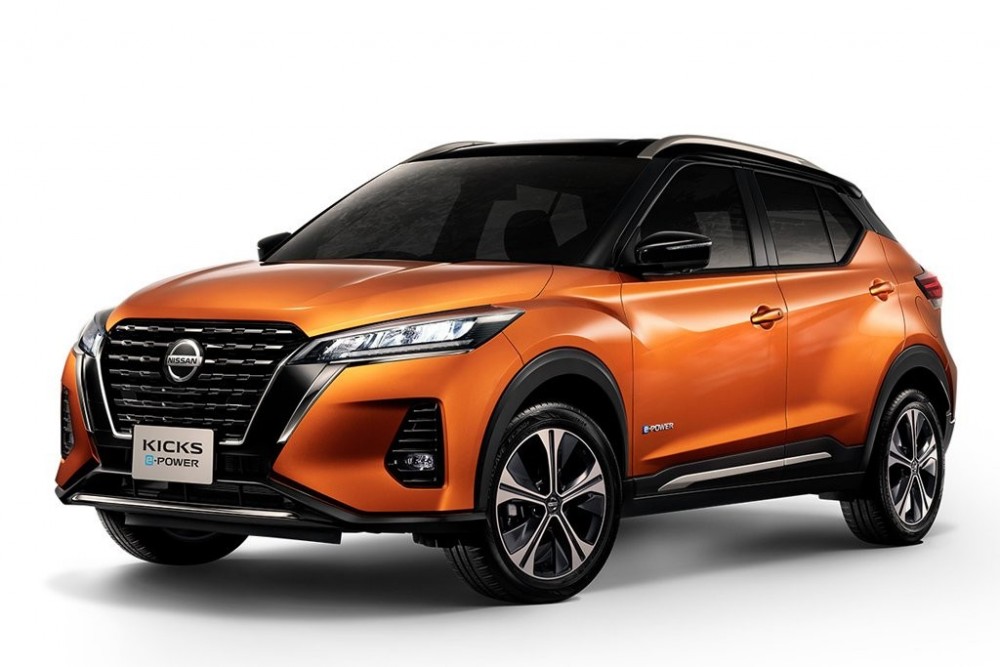
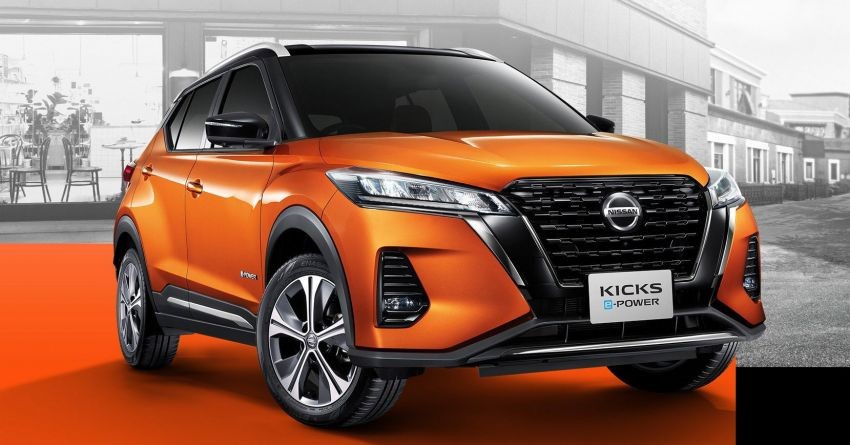
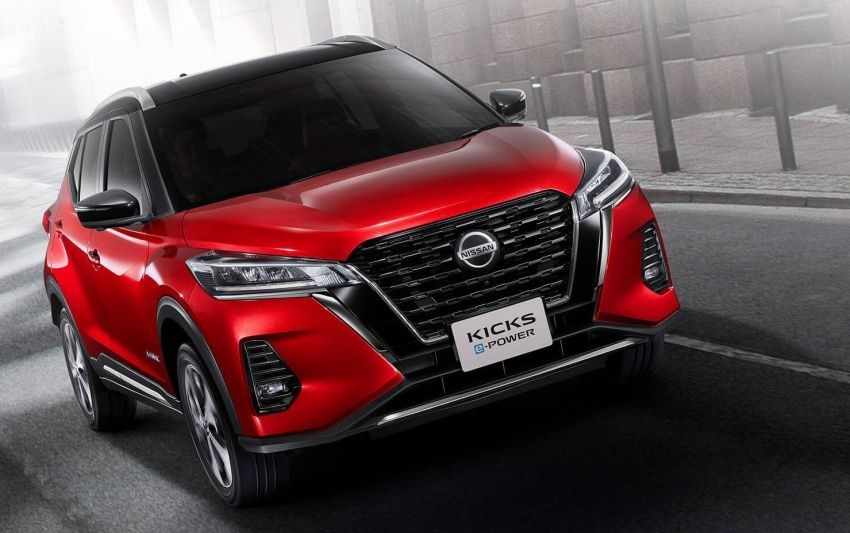

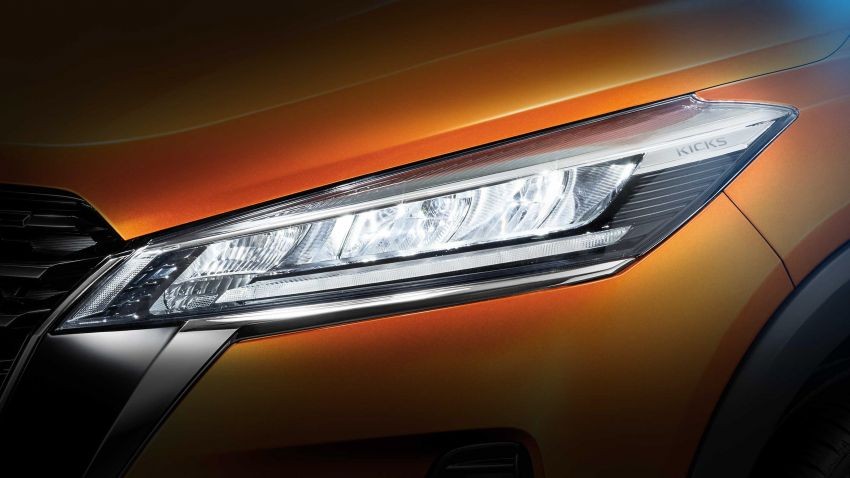
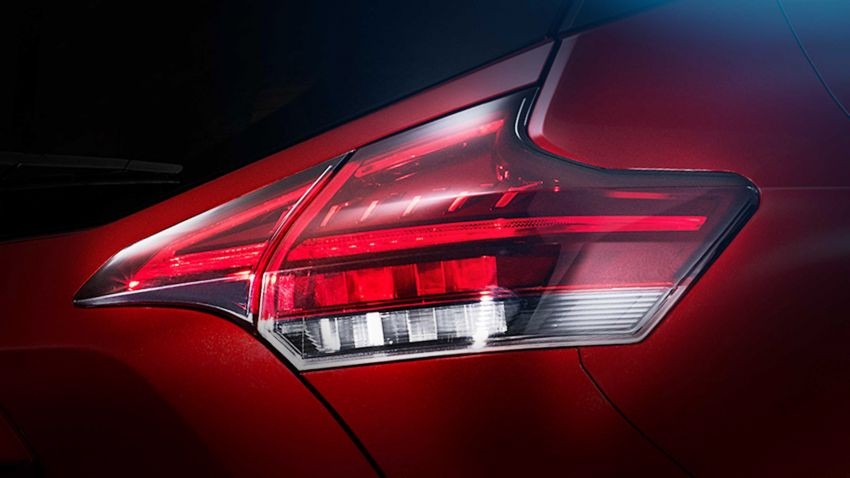
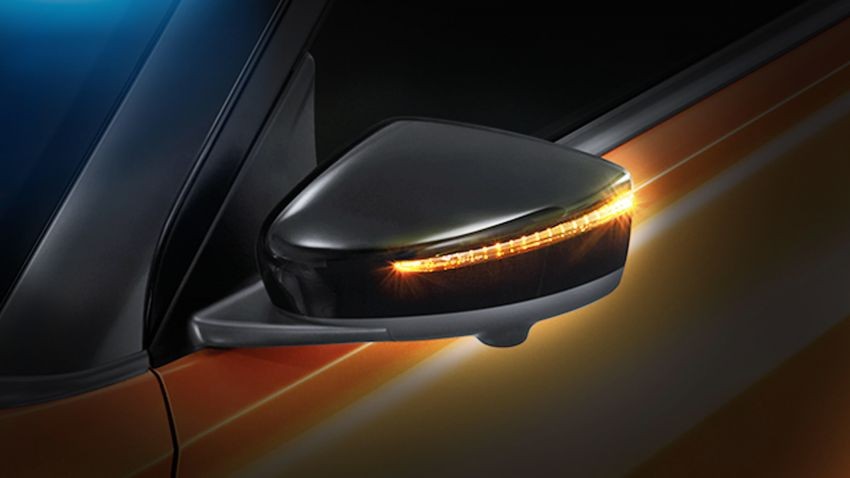

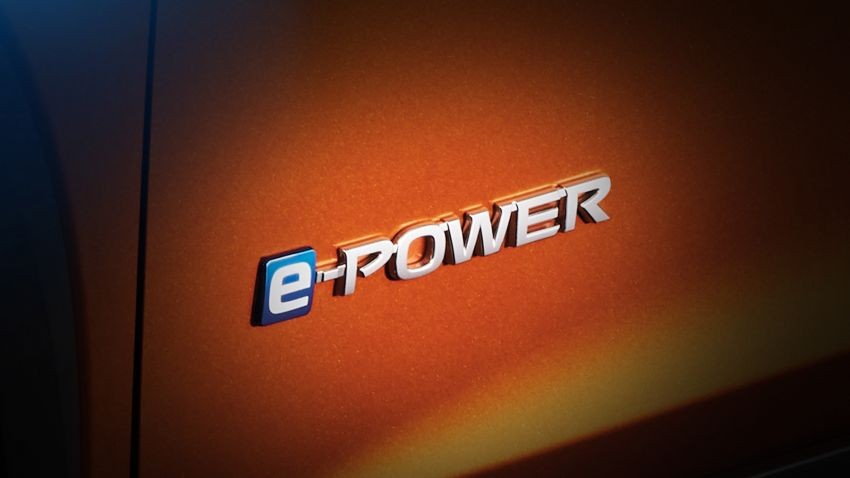
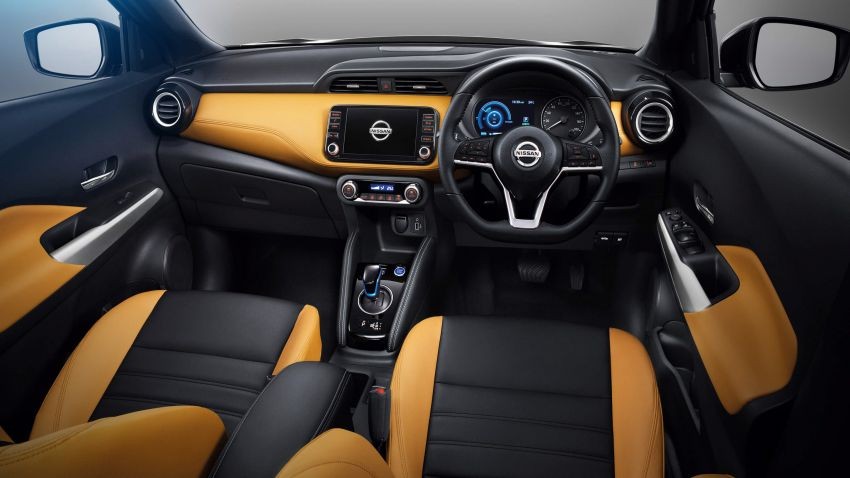


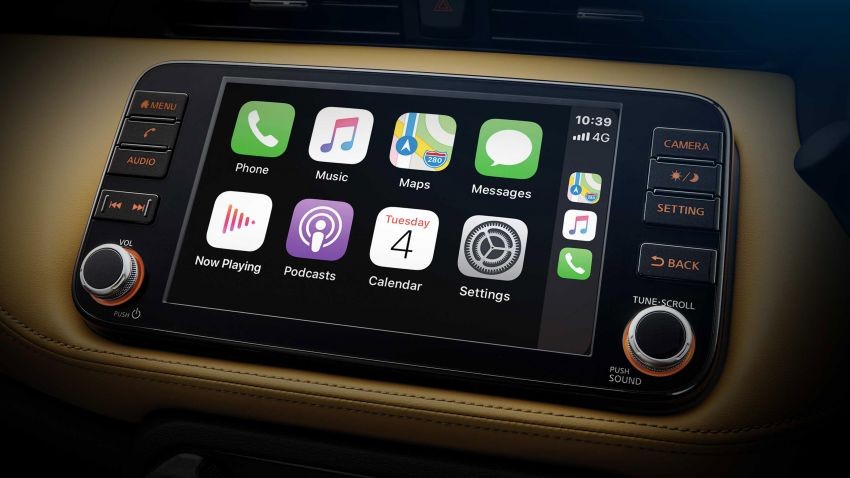
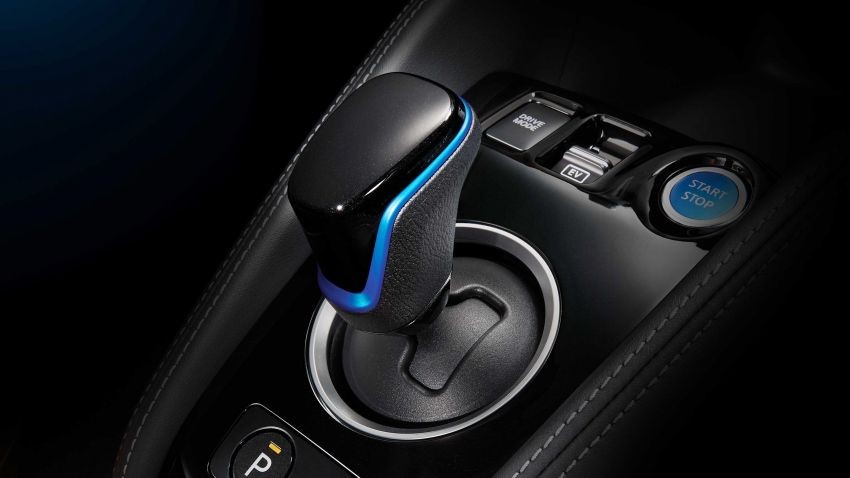
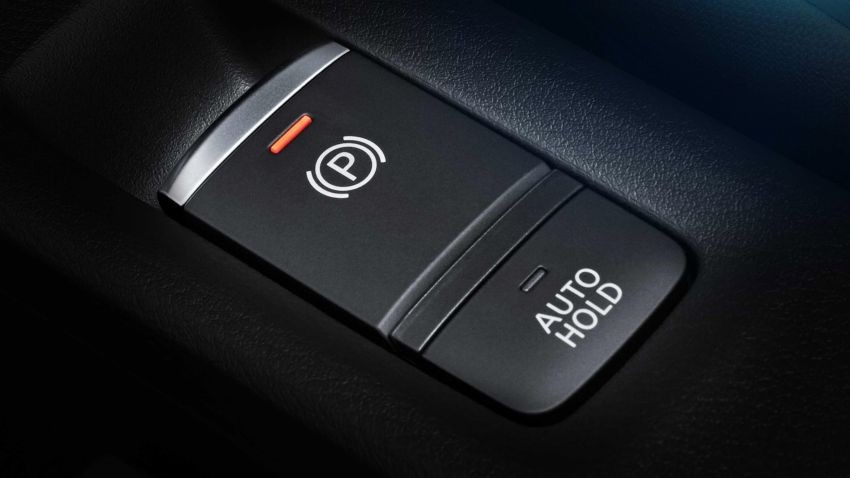






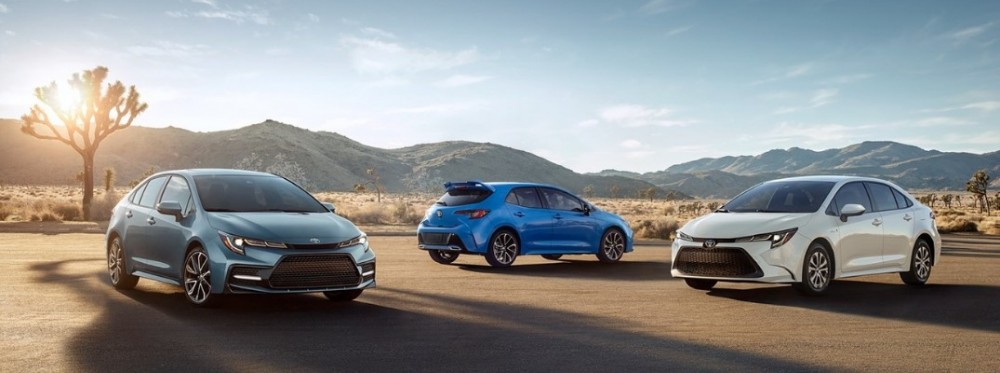
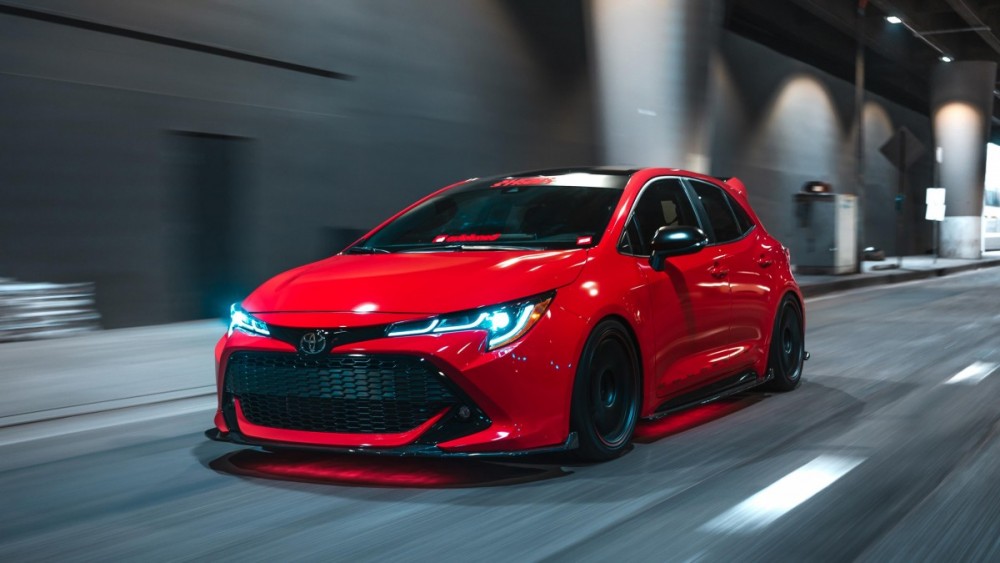
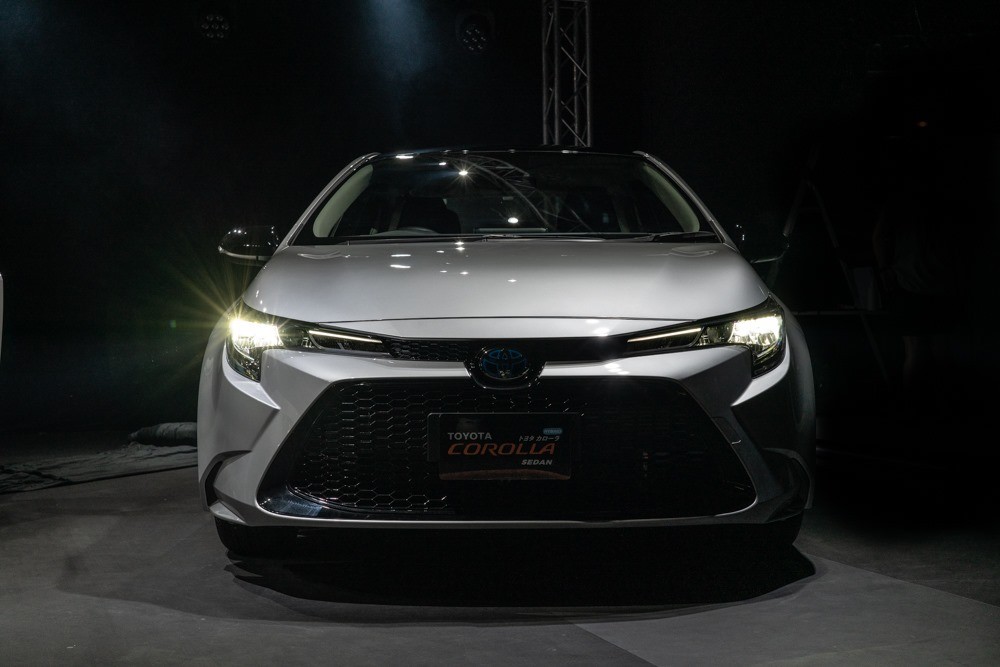
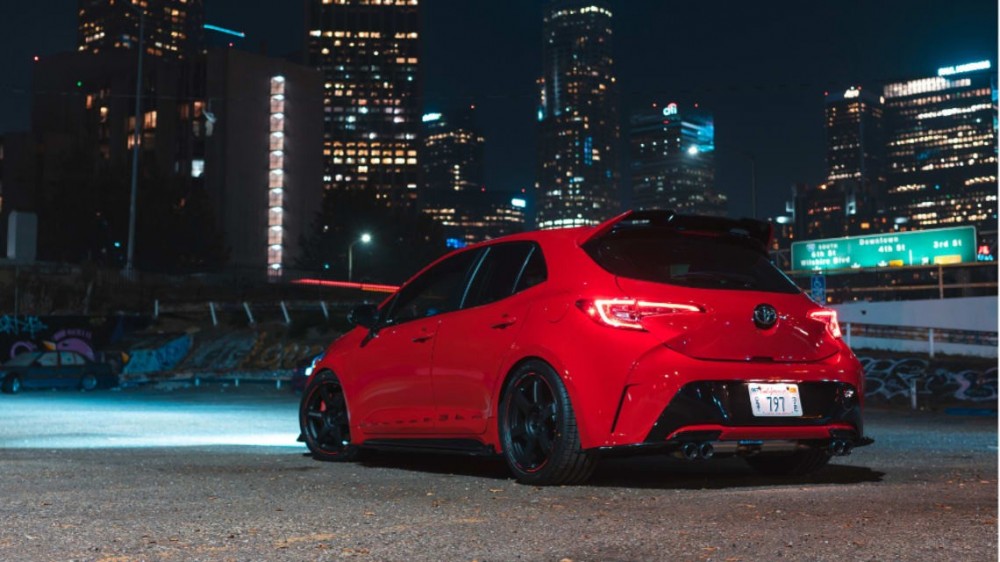


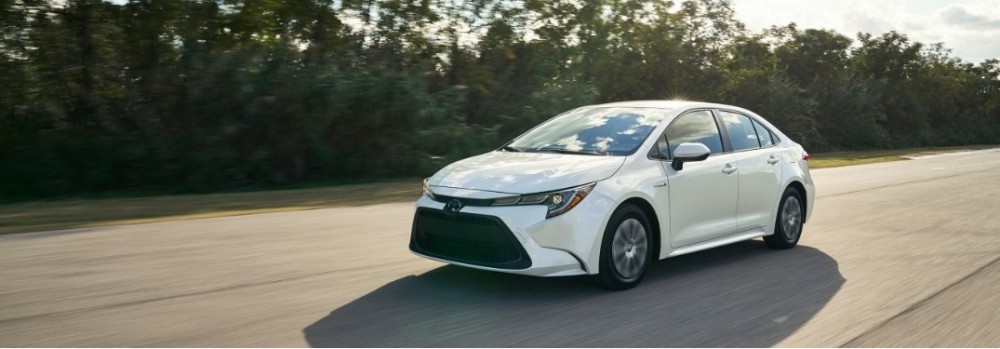
.png)
